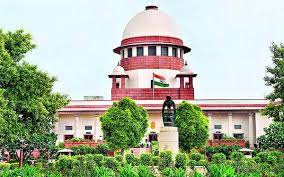CURRENT AFFAIRS
Get the most updated and recent current affair content on Padhaikaro.com
Death Penalty
- IAS NEXT, Lucknow
- 11, Feb 2022

Reference News:-
The Supreme Court has made the following suggestions on the applicability and imposition of death Penalty in its recent judgment.
- The judgement came in the rape and murder of a seven-year-old. The court commuted the death penalty of the convict to life imprisonment.
What has the Supreme Court said?
- Trial judges should not be swayed in favour of death penalty merely because of the dreadful nature of the crime and its harmful impact on the society. They should equally consider the mitigating factors in favour of life imprisonment.
- The judgment referred to the evolution of the principles of penology. Though capital punishment serves as a deterrent and a “response to the society’s call for appropriate punishment in appropriate cases”, the principles of penology have “evolved to balance the other obligations of the society, i.e., of preserving the human life, be it of accused, unless termination thereof is inevitable and is to serve the other societal causes and collective conscience of society”.
How should the Courts decide on capital punishment impositions?
In the case of Bachan Singh (1980), the Supreme Court formulated a sentencing framework to be followed for imposing death penalty.
- It required the weighing of aggravating and mitigating circumstances relating to both the circumstances of the offence and the offender, to decide whether a person should be sentenced to death or given life imprisonment.
- According to the Bachan Singh judgment, for a case to be eligible for the death sentence, the aggravating circumstances must outweigh the mitigating circumstances.
What is collective conscience?
Collective consciousness (sometimes collective conscience or conscious) is a fundamental sociological concept that refers to the set of shared beliefs, ideas, attitudes, and knowledge that are common to a social group or society.
Evolution of collective conscience:
‘Collective conscience of society’ as a ground to justify death penalty was first used by the Supreme Court in the 1983 judgment of Machhi Singh v. State of Punjab. In that case, the court held that when “collective conscience of society is shocked, it will expect the holders of the judicial power centre to inflict death penalty”.
- It was, however, most famously used by the top court in its 2005 judgment in the Parliament attack case in which it awarded capital punishment to convict, Afzal Guru.
- Collective conscience found its most recent endorsement in the 2017 judgment of the Supreme Court in the December 2012 Delhi gang rape case of Mukesh v. State of NCT of Delhi.
Concerns:
Can the courts allow any kind of public outcry, sense of conscience, sentiment or feeling to even remotely influence their decisions, especially when it is a case of the death sentence? This is even more relevant in the times that we live in, when television and social media bombard us, creating and determining opinion.
Need of the hour:
Our Constitution is based on the principle of justice for the most marginalised, disfranchised, oppressed, unknown, unseen and ignored. This spirit demands that law cannot rely on or be influenced by any delusionary sense or mood of the people. We need in judges a liberal energy and the ability to be creative human beings.
Recommendations by law commission:
The Law Commission in 2015, headed by Justice A P Shah proposed to abolish capital punishments. However, the commission had made the proposal only to non-terrorism cases. According to the commission, India is one among few countries that still carry out executions. The other countries that practice executions include Iran, Iraq, Saudi Arabia, China. By the end of 2014, 98 countries had abolished death penalty.